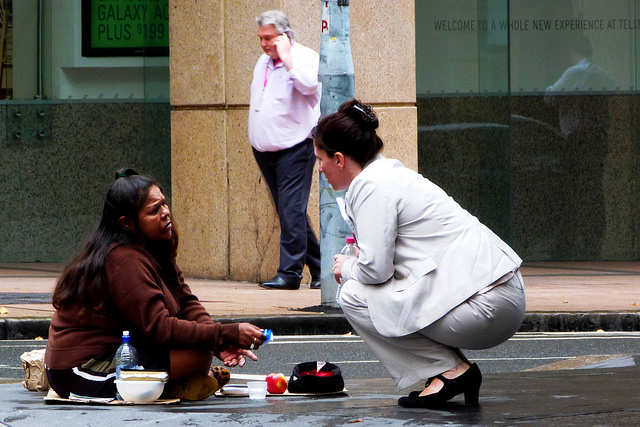blog
As an executive coach I believe that I need to take some risk if I’m to offer my coaching clients the opportunity to stretch and grow – and that such risks offer me too the opportunity to grow and expand my coaching repertoire. Some of my clients have invested themselves in the unfamiliar approaches that I might bring to coaching, and have gained a great deal from putting their trust in a technique they didn’t understand, just because they trusted me.
I’m aware that only if I can be a role model of risk-taking – with a good enough understanding of the risk – can I aspire to offer coaching of value.
To learn more, see my just-published article in Coaching at Work Jan/Feb 2015 if you’re a subscriber, or e-mail me directly at lw@lindsaywittenberg.co.uk for a pdf
Photo by ohmyGaly via Compfight
Leading across Cultures
To work effectively with difference, the starting point is to understand and be aware of oneself: behaviours, emotions, interpretations, assumptions, and the impact of assumptions. It means taking a holistic view, being curious, and holding back from making judgments of the worth of this or that person, or from jumping to conclusions. Leaders who are culturally aware create sub-cultures of greater trust, more effective communication, healthier relationships and leadership that releases infinitely more potential.
Read more »Factors in managing the executive career
Executives who have taken their careers in hand in a holistic sense, thinking ‘whole-life’ rather than simply in terms of the next apparently logical step on the ladder, are more likely to enjoy career longevity and deliver the fullest value for themselves and their organisations. The Wittenberg Career Coaching Model weaves together multiple factors within multiple perspectives to take account of this ‘whole-life’ approach.
Read more »Step back to go forward
Coaching clients who can't see the bigger picture of their challenge can look their problem in the eye by externalising the issue: working with the systemic factors of their environment can bring a fresh perspective and acknowledging ‘what is’ often makes a new solution possible.
Read more »Your personal brand: a marketable identity
Your personal brand conveys what makes you compelling, memorable and interesting, and becomes increasingly important the more senior the roles you take on. Expressing your personal brand relates to your passions and the sources of your personal fulfilment, your values and your achievement, your strengths and your reputation, your personal vision and your thought leadership.
Read more »Leadership coaching
Leaders who embrace the process of learning and raising their levels of self-awareness, self-understanding, understanding of others and understanding of the systems and contexts they operate within stand to gain the most from leadership coaching. On their coaching journeys they learn to listen to themselves and see themselves as others see them. They become more authentic, they see more clearly what kind of leaders they want to be, and they discover how to make that happen. They learn how to respond rather than react, in a fuller awareness of the choices they make.
Read more »You're unbelievable!
'You're uneblievable' - the latest article in my regular reflection column - has been published in 'Coaching at Work'. I'm inspired by Dr Kate Granger, a 32-year-old doctor who’s a terminally ill cancer patient and who's launched #hellomynameis. Change that lasts is internally motivated rather than externally motivated.
Read more »Managing yourself to lead others
The leader who builds on, and develops, their self-awareness in such a way that they can step back emotionally from situations to put their own thinking on hold, and empathise with the players in those situations, will find that they are more connected with their people, and that higher levels of trust, performance, engagement and discretionary effort – rather than obedience or compliance (and the corresponding ‘jobsworth’ mentality) – are the order of the day.
Read more »Diversity: making more of difference
In order to work effectively with difference, the first two steps for the leader are, first, to understand and be aware of their own thinking, emotional processes and place in their systems, and, second, to adopt a stance of acceptance, humility and celebration of diversity. If the prevailing culture in their team, division or organisation doesn’t acknowledge or value diversity, then the leader needs to change their relationship to that culture (and the relationships within it) rather than try to change it from the outside.
Read more »The real message
My latest article in my reflection column has been published in 'Coaching at Work'. It explores the opportunities and traps inherent in the first coaching session with a new client.
Read more »











